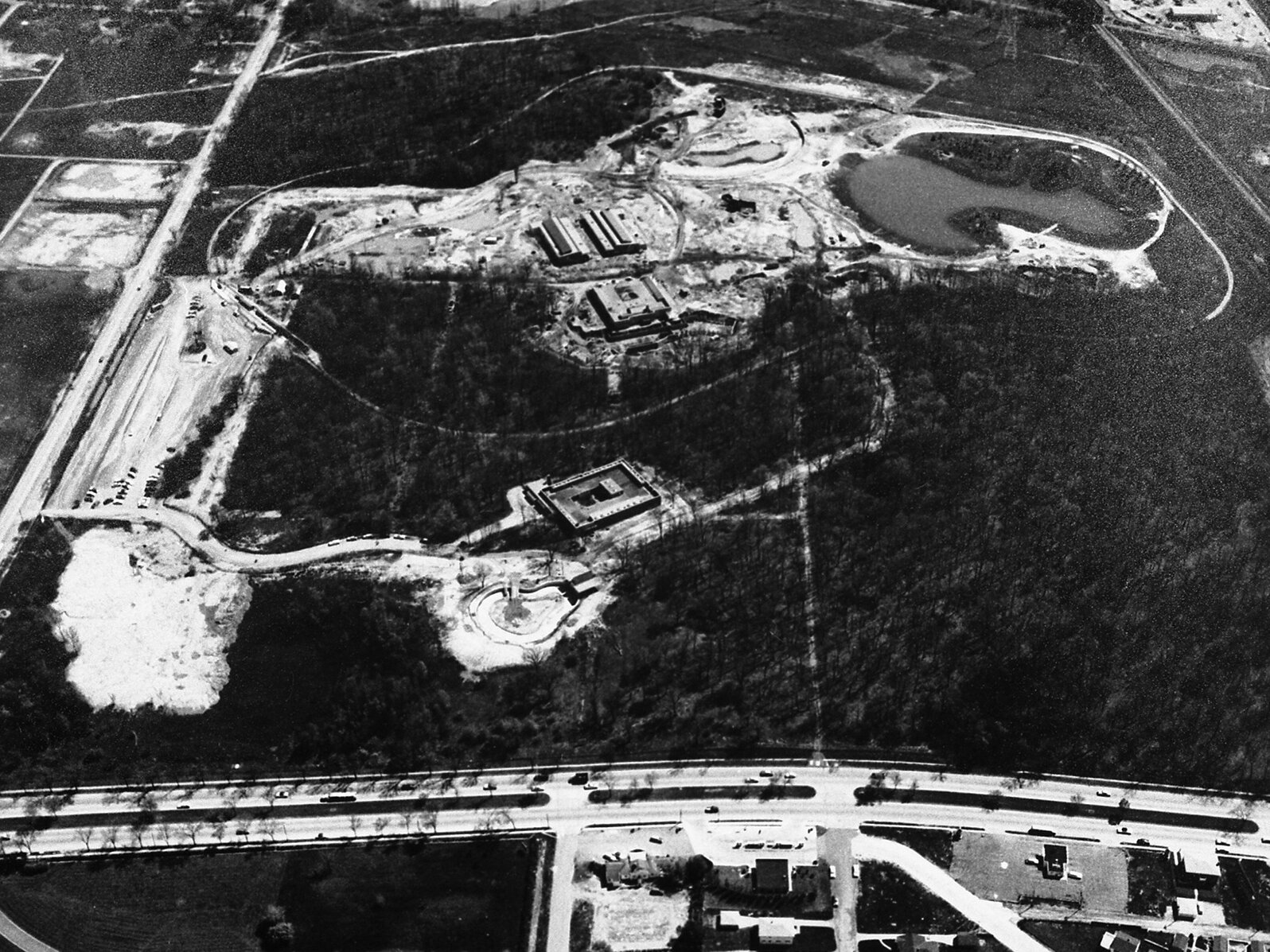If you like this article, read more about Milwaukee-area history and architecture in the hundreds of other similar articles in the Urban Spelunking series here.
You just need to look at the 1915 photo of the polar bear exhibit at the Washington Park Zoo in this article to see why Milwaukee County decided to acquire a huge plot of land to construct a new zoo, beginning in the late 1950s.
While the Washington Park Zoo, opened in 1892, had served its purpose, at just 38 acres and hemmed in by neighborhoods on two sides and a multi-purpose park on two more, there was little room to grow.
Add the fact that the zoo was slated to lose some of its western acreage – which had been home to the elephant, bear and other buildings – and the picture comes even more into focus.
With an eye toward the move, the zoo was renamed the Milwaukee County Zoological Gardens in 1953 and initiatives to raise the $12.6 million required to build the new 190-acre zoo began soon after.
The idea sprouted even earlier, it seems, because the county began acquire land for the new zoo as early as 1947, at which time it was estimated that land acquisition – which continued through 1964 – would cost $200,000.
The land on which the Milwaukee County Zoo is located in a number of subdivisions – including Midway Park, Wetzel and Forestdale – in Town of Wauwatosa, and was acquired by eminent domain and purchased from individual landowners and corporations, according to zoo records.
Interestingly, for a time, Milwaukee had two zoos.
The Milwaukee County Zoo opened in its current location in 1958 with a focus on relocating the buildings and habitats that were being replaced in Washington Park with the planned Stadium Freeway.
So first up were the primate building, feline house, grizzly bear den and pachyderm mall as well as some others like monkey island and winter quarters barn beneath the feline building, which, according to Milwaukee County Zoo Librarian/Information Specialist Mary E. Kazmierczak, "houses the ‘prey’ animals for the South American (tapirs, alpaca), the African Waterhole (zebra, kudu, eland, waterbuck), and African savannah (impala, gazelles) yards. The predators (jaguars, lions/hyenas, cheetahs) are housed above in the feline building."
According to Kazmierczak, the first animal exhibit building completed was the A-frame on monkey island that was heavily renovated in 2002, losing its original appearance. The restaurant and administration buildings were also among the earliest additions.
"The first thing built on zoo grounds was the train," Kamierczak adds. "People could ride the train and watch the construction of the zoo."
The cost of the first eight buildings was $12.6 million.
The principal architects for the design and layout of the zoo were modernists Grassold & Johnson, whose work is everywhere in Milwaukee.
Among the buildings the firm designed are the Primate House, Monkey Island, the winter quarters for the monkeys, Carnivore House, Aviary, service building, winter quarters for hoofed animals, Aquarium and Australian Exhibit Building and the Children's Zoo.
The first locomotive for the 15-inch gauge railway was a 4-4-0 steam engine built by the Sandley Light Railway Works of Wisconsin Dells in 1957. A couple years later, a diesel engine arrived. Two more steam locomotives were added in 1961 and 1977. In 1989, the zoo loaned that original steam locomotive to the Riverside and Great Northern Railway in the Dells and later received another diesel engine in a permanent trade.
In 1958-59, the sheep mountain and Alaskan bear, polar bear and wolverine exhibits were added, as was a commissary. In 1959, the last Rhesus macaques were moved from Washington Park to the new zoo.
The giraffe building followed in 1960 and just before the zoo officially opened to the public on May 13, 1961, the train depot was completed.
It was at this point that the Washington Park Zoo saw its last days.
Kazmierczak couldn't find a specific closing date for the Washington Park facility, but the last animals were moved in 1963.
Over the following years, of course, many more exhibits and buildings were opened, including the aviary in 1962, the hospital in 1963, the small mammals building in 1964 and the aquarium/reptile building in 1966.
Work to continue improving the zoo continues to this day, with new otter, elephant and hippo areas being among the most recent upgrades.
Here are some photos of the Milwaukee County Zoo as it was being built, courtesy of Milwaukee County Parks and Milwaukee County Zoo:
Planning the zoo, February 1954

Zoo director George Speidel (far right) reviews plans for the new zoo with Otto R. Kuehn (far left), chairman of the New Zoo Committee of the Zoological Society of Milwaukee; Walter Bender (second from left), president of the Milwaukee County Park Commission; and Jerome Dretzka (second from right), secretary of the Milwaukee County Park Commission.
Aerial view, looking east, 1959

Aerial view, looking northeast, circa 1959
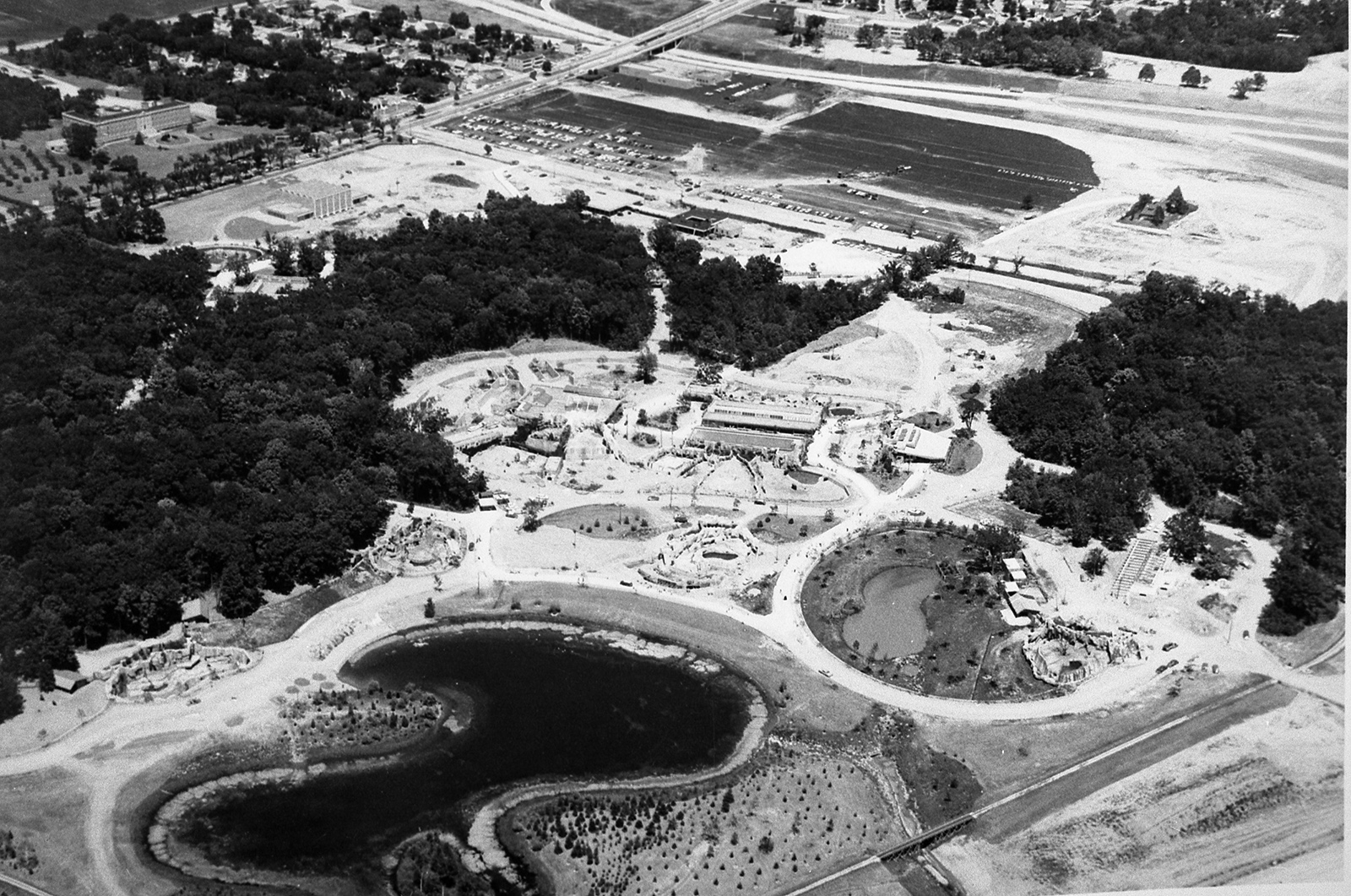
Zoo train, completed 1958
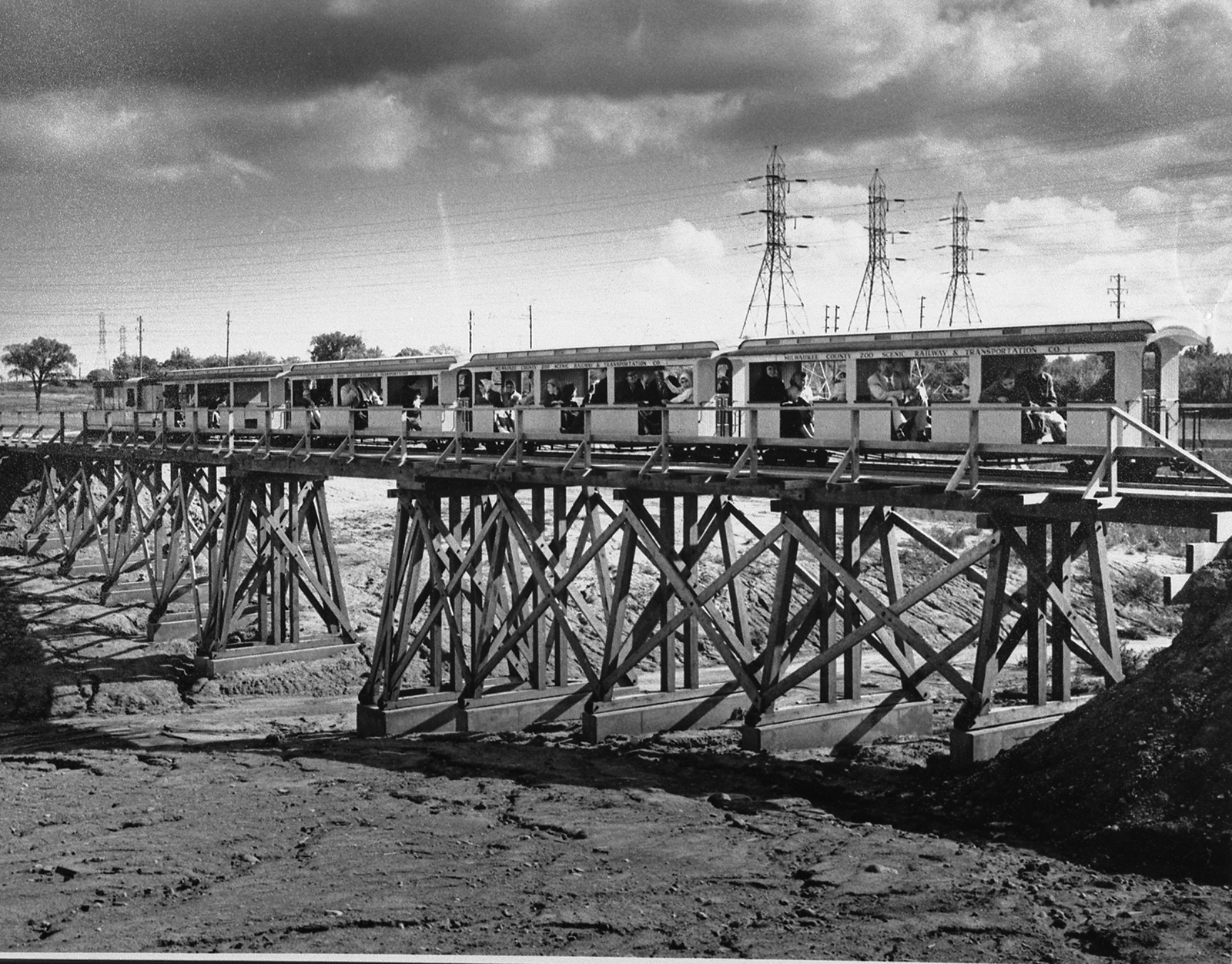
Elephant buildings, completed 1958
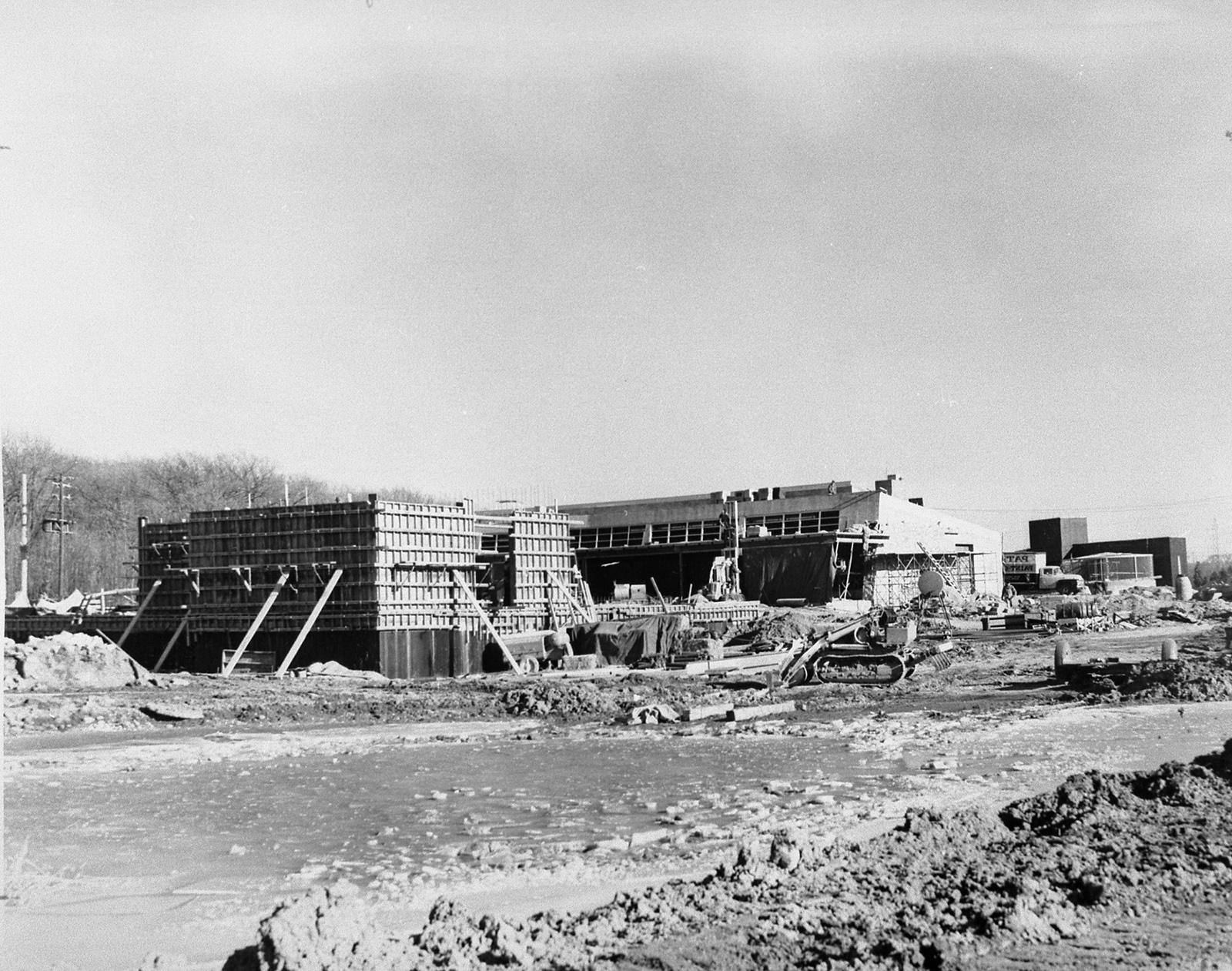
Feline building, completed 1958
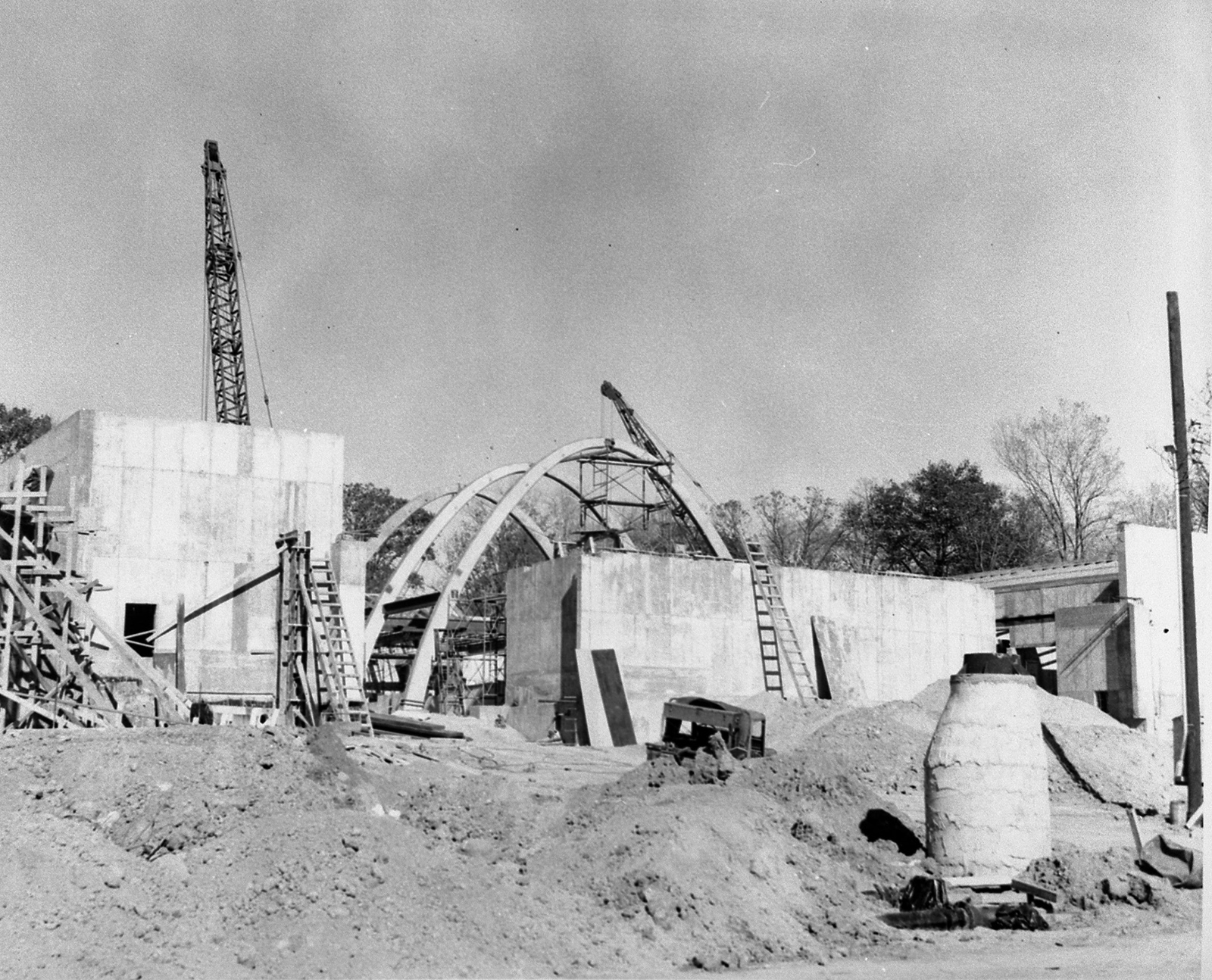
Winter quarters, completed 1958
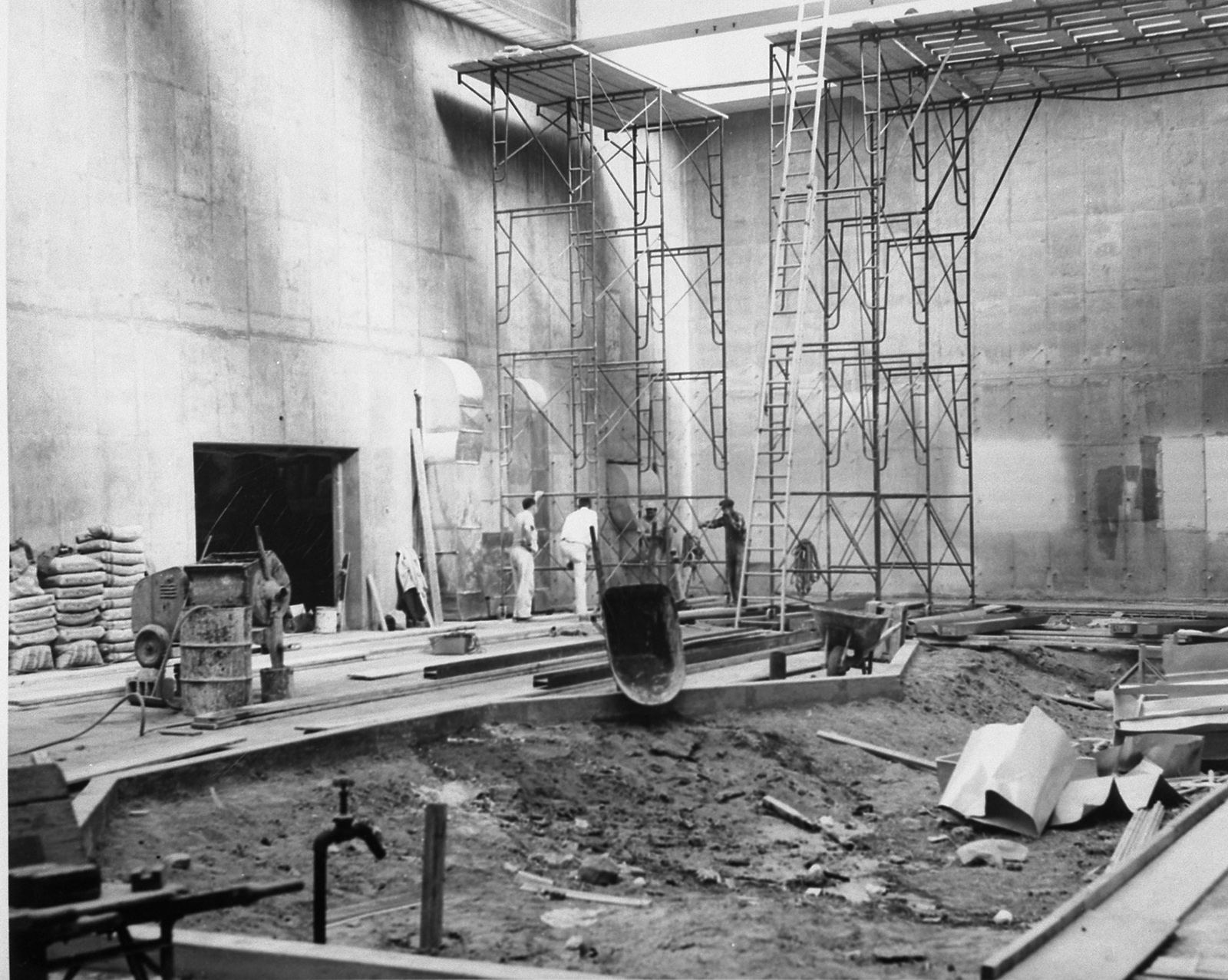
Monkey Island, completed 1958
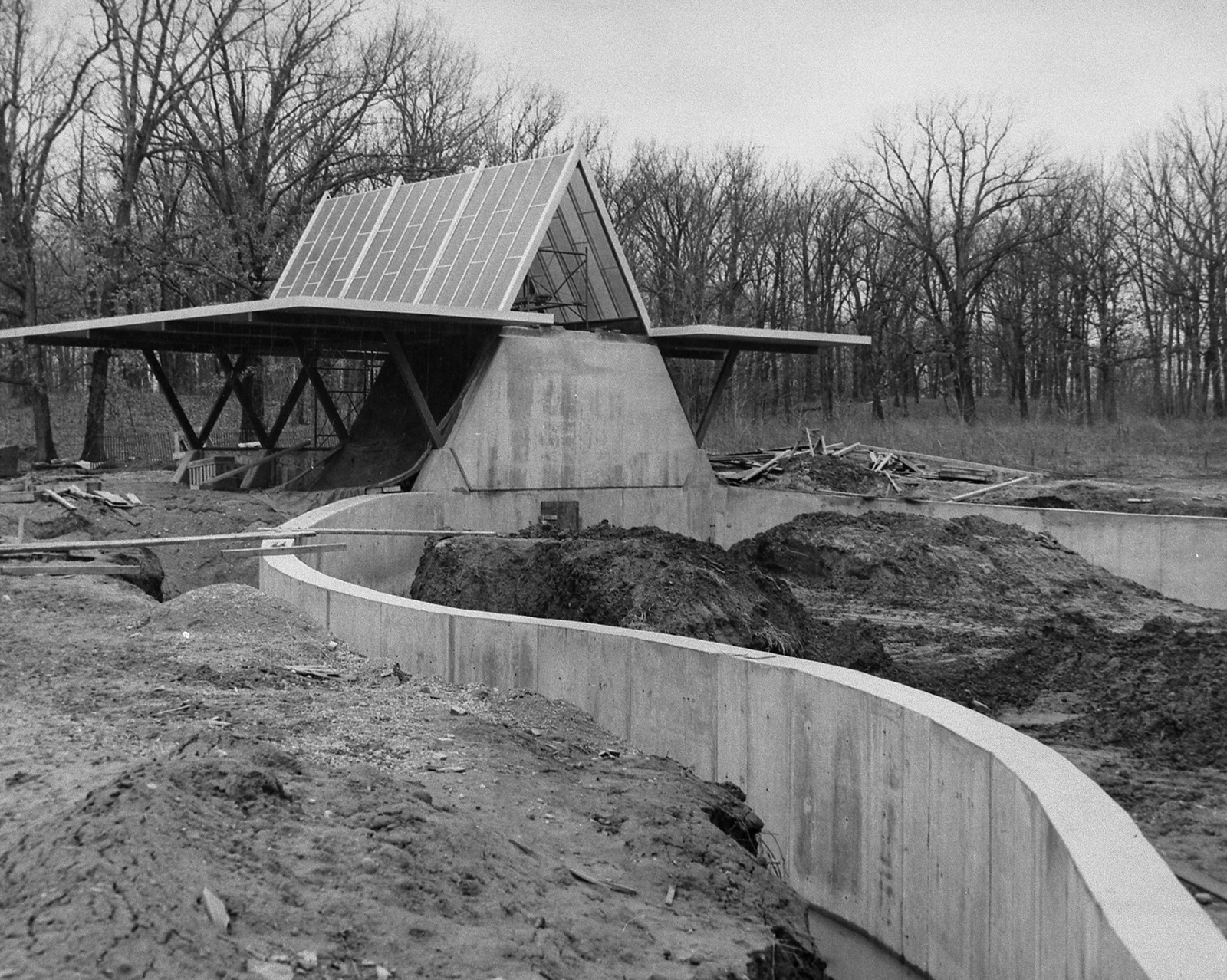
Giraffe yard, completed 1960

Small mammals building, completed 1964
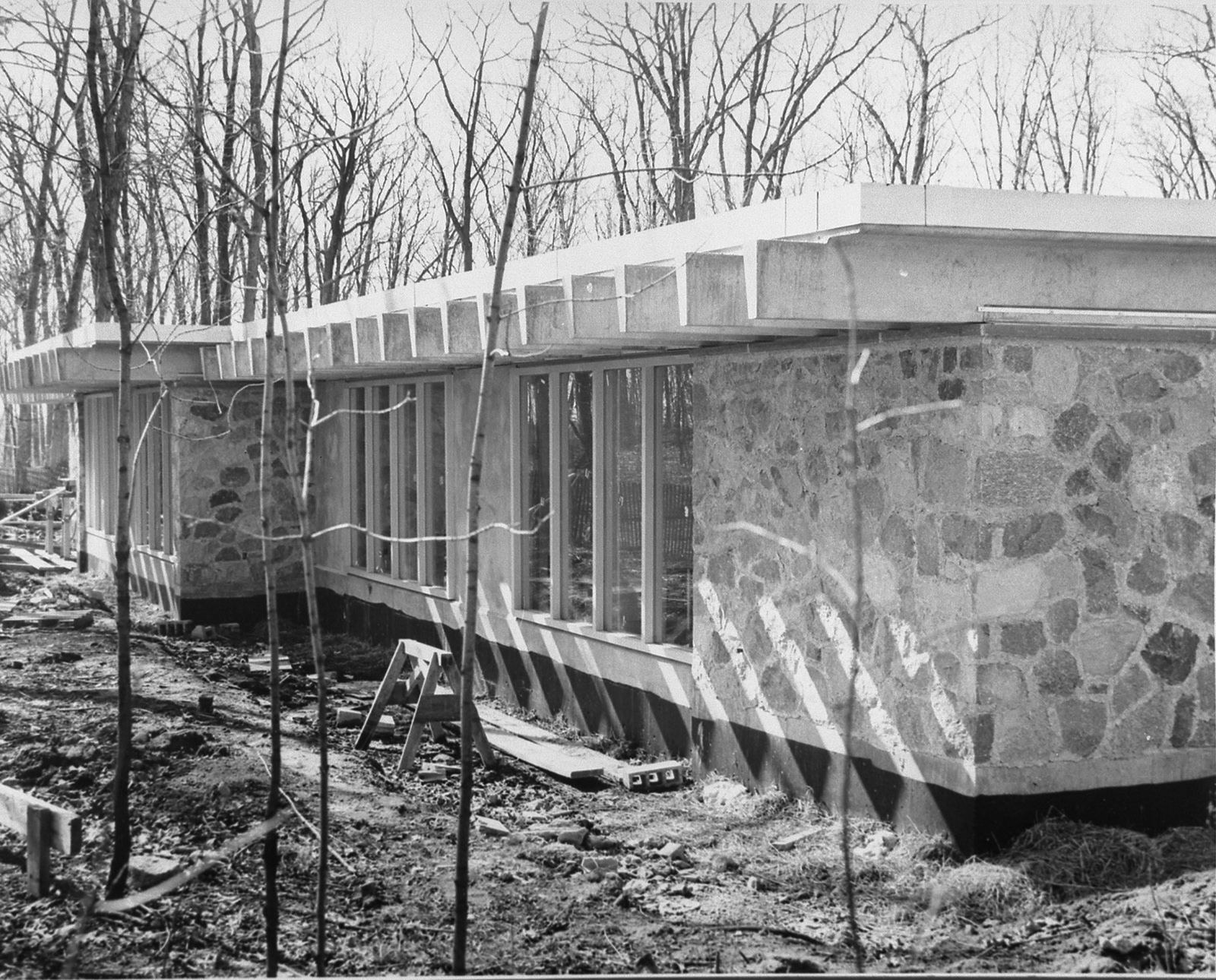
See 15 vintage Washington Park Zoo photographs here.
There are another 14 Washington Park Zoo images, including a map of the zoo exhibits here.
Born in Brooklyn, N.Y., where he lived until he was 17, Bobby received his BA-Mass Communications from UWM in 1989 and has lived in Walker's Point, Bay View, Enderis Park, South Milwaukee and on the East Side.
He has published three non-fiction books in Italy – including one about an event in Milwaukee history, which was published in the U.S. in autumn 2010. Four more books, all about Milwaukee, have been published by The History Press.
With his most recent band, The Yell Leaders, Bobby released four LPs and had a songs featured in episodes of TV's "Party of Five" and "Dawson's Creek," and films in Japan, South America and the U.S. The Yell Leaders were named the best unsigned band in their region by VH-1 as part of its Rock Across America 1998 Tour. Most recently, the band contributed tracks to a UK vinyl/CD tribute to the Redskins and collaborated on a track with Italian novelist Enrico Remmert.
He's produced three installments of the "OMCD" series of local music compilations for OnMilwaukee.com and in 2007 produced a CD of Italian music and poetry.
In 2005, he was awarded the City of Asti's (Italy) Journalism Prize for his work focusing on that area. He has also won awards from the Milwaukee Press Club.
He has be heard on 88Nine Radio Milwaukee talking about his "Urban Spelunking" series of stories, in that station's most popular podcast.

